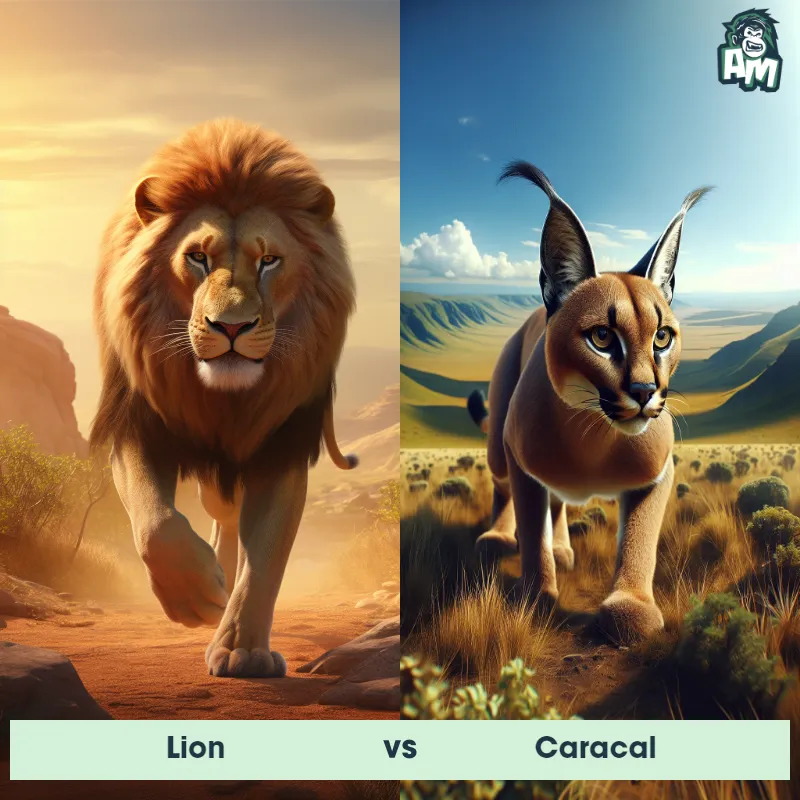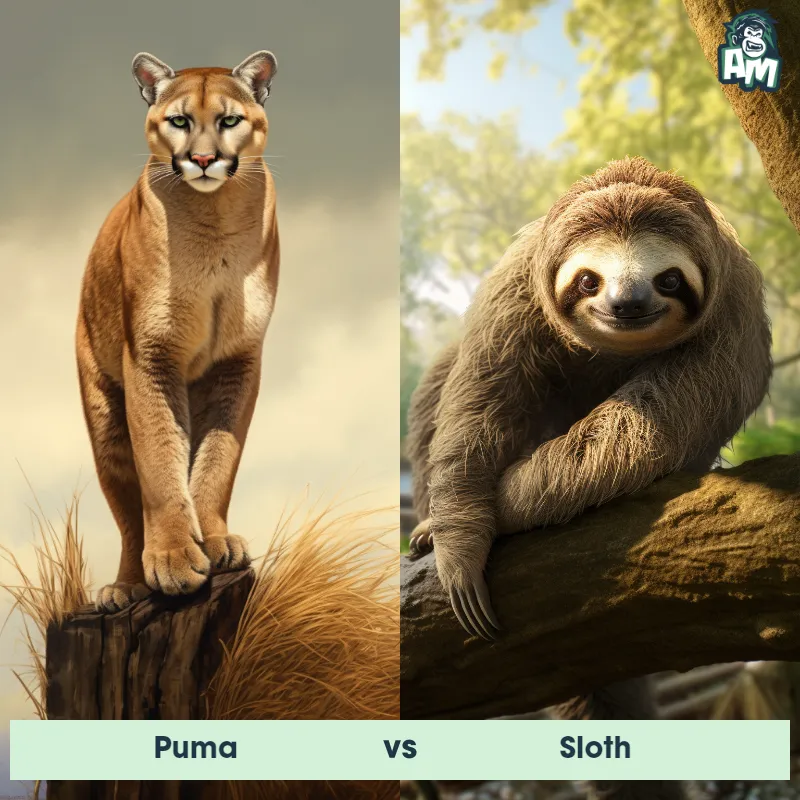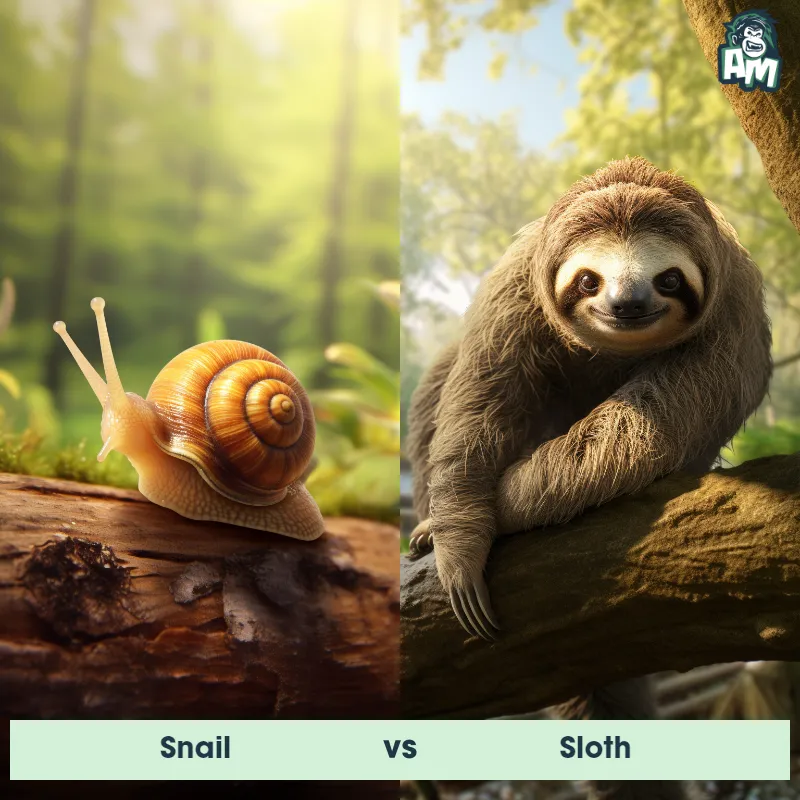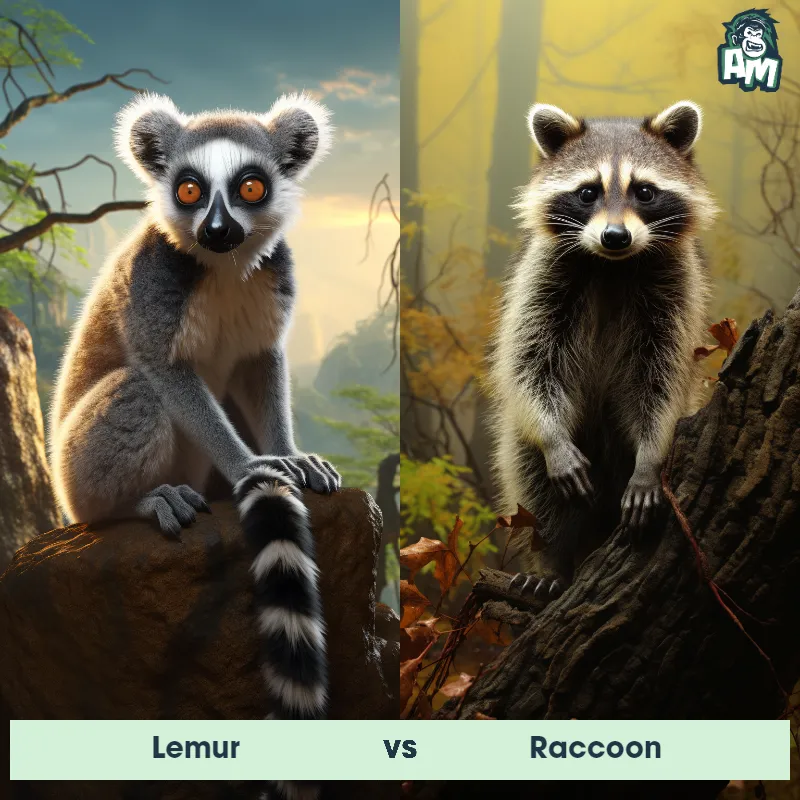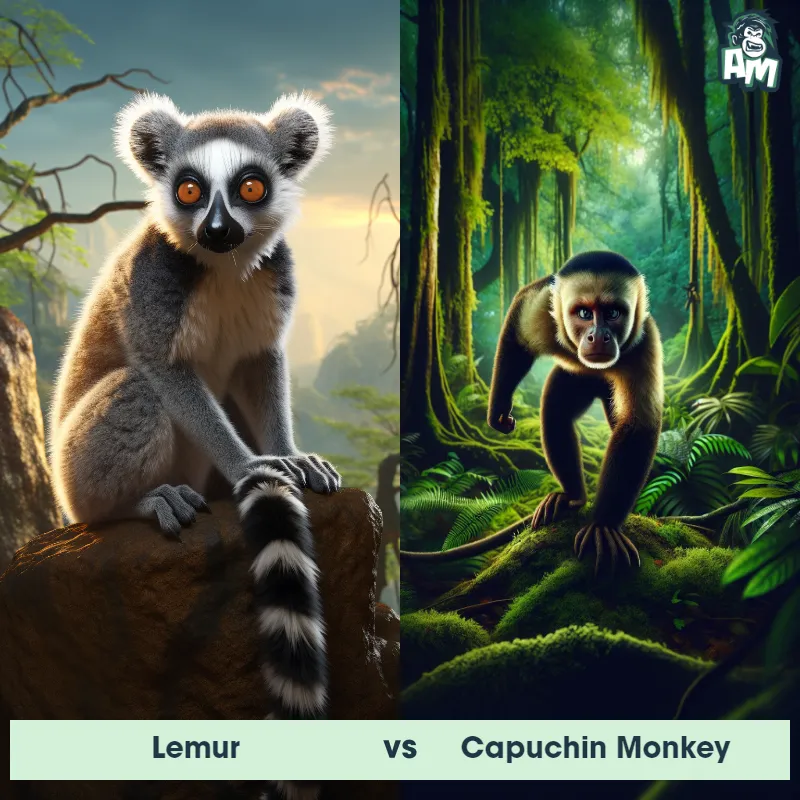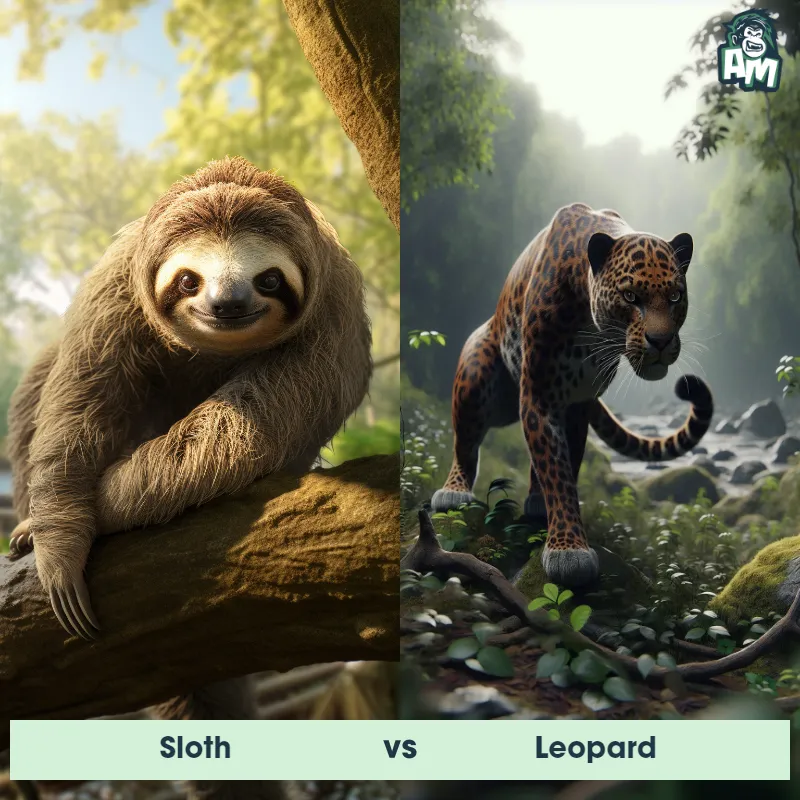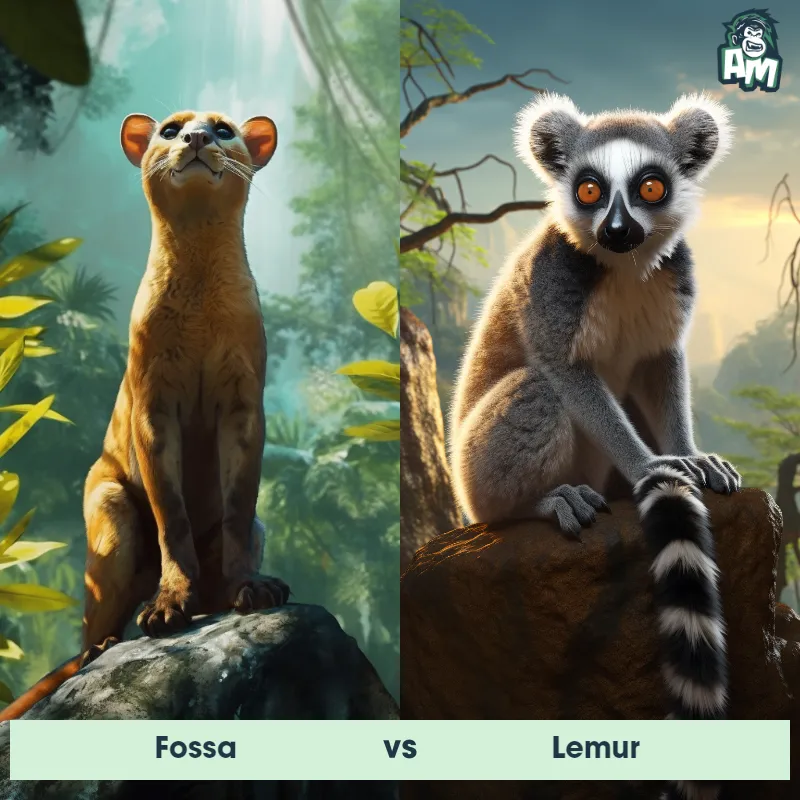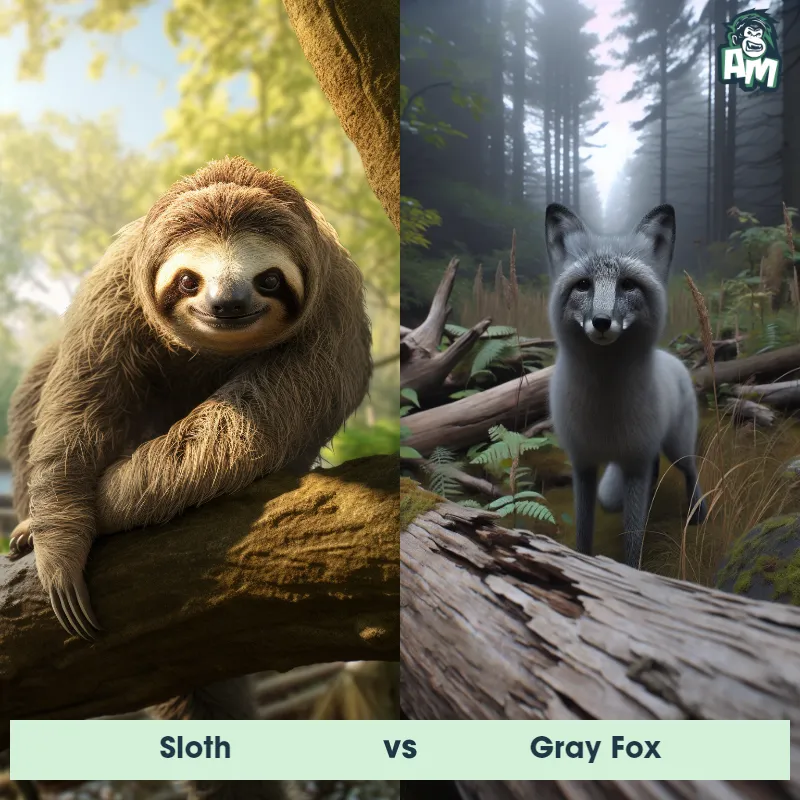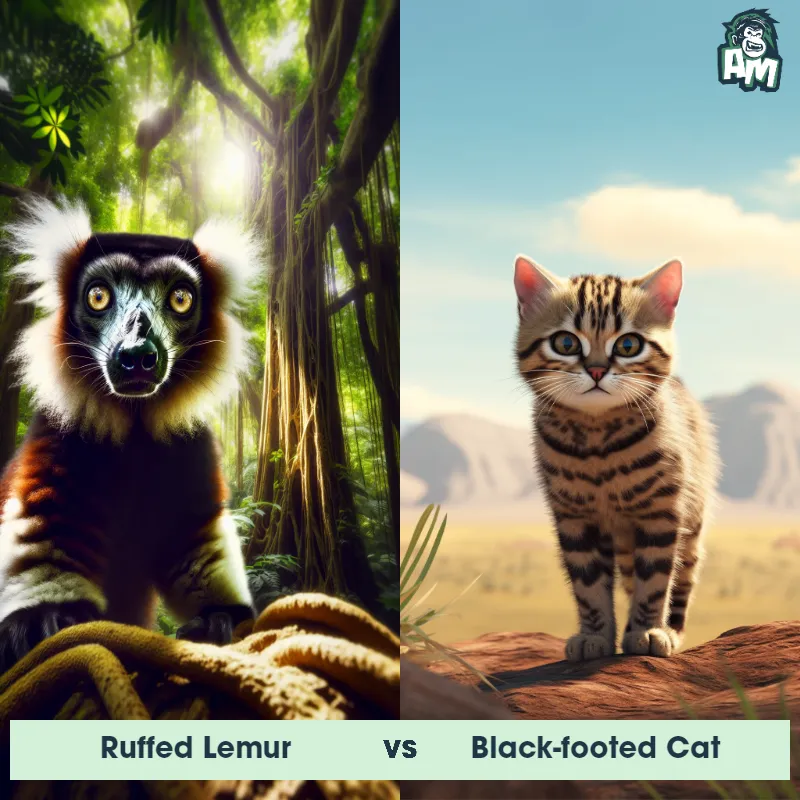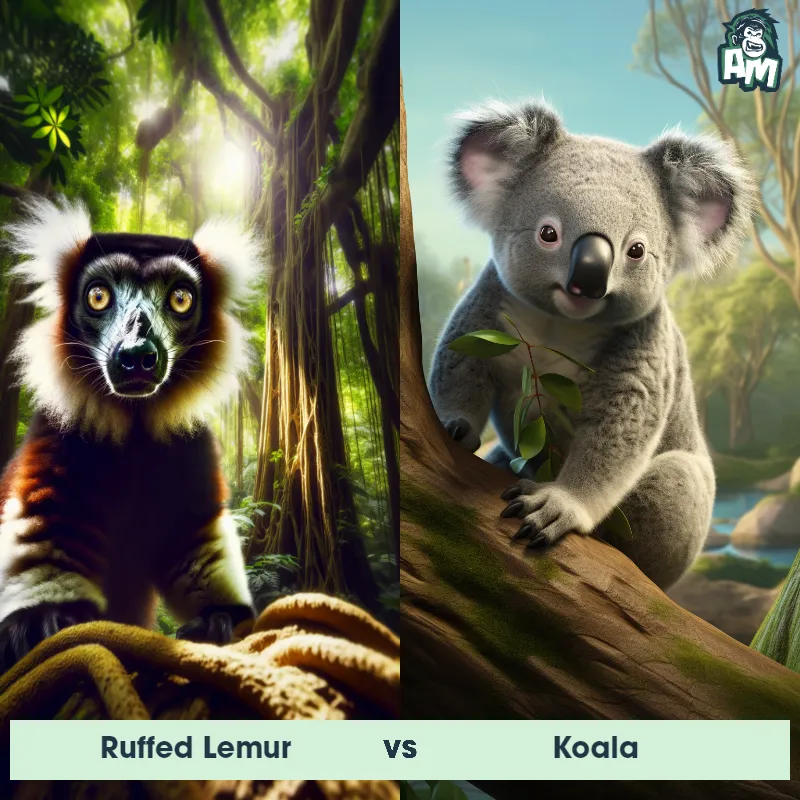Lemur vs SlothSee Who Wins

Ladies and gentlemen, welcome to tonight's thrilling matchup between a Lemur and a Sloth! These remarkable creatures may not be the first animals that come to mind when you think of fierce competitors, but tonight, they are ready to show us their hidden fighting skills. Both animals are uniquely adapted to their natural environments, so it will be fascinating to see how they utilize their strengths in this three-round bout. Let the showdown begin!
Contender 1: Lemur
The Lemur is a type of primate known as a prosimian, native to the island of Madagascar. Lemurs come in various sizes and colors, but they are typically characterized by a pointed snout, large eyes, and a long tail that can be longer than their body. Many lemur species have a thick and woolly fur that ranges in color from reddish-brown to gray and black. Lemurs are arboreal animals, spending most of their time in trees, and their diet consists of fruits, leaves, flowers, and insects.
Fun Fact: Lemurs communicate with each other using a variety of vocalizations, body postures, and scent markings, exhibiting a complex and intriguing social structure.
Contender 2: Sloth
The Sloth is a slow-moving arboreal mammal native to the rainforests of Central and South America. Recognized for their distinctively long limbs and hooked claws that help them hang from trees, sloths have a shaggy coat and a rounded face with a flat snout. They spend the majority of their lives in trees, only descending about once a week to defecate. Their diets mainly consist of leaves, twigs, and buds.
Fun Fact: Fascinatingly, the sloth's slow metabolic rate and largely motionless lifestyle allows it to survive on just a small amount of food, sometimes taking up to a month to fully digest a meal.
Matchup Stats
| Lemur | Sloth | |
|---|---|---|
| Size | Varies by species, 3.5 inches to 2.5 feet (9 cm to 76 cm) | 24 to 30 inches (60 to 75 cm) |
| Weight | Varies by species, 1 ounce to 20 pounds (30 grams to 9 kg) | 8 to 17 lbs (3.6 to 7.7 kg) |
| Speed | 20mph (32km/h) | 0.15mph (0.24km/h) |
| Key Strength | Agility and speed | Strong grip and sharp claws |
| Biggest Weakness | Small size and lack of aggressive behavior | Slow movement |
Current Votes
Lemur vs Sloth
See Who Wins
View More Matches
Looking For More?
Similar Matches
Scientific Stats
| Lemur | Sloth | |
|---|---|---|
| Scientific Name | Lemuriformes | Bradypus or Choloepus |
| Family | Lemuridae | Bradypodidae or Megalonychidae |
| Habitat | Forests and jungles | Rainforests |
| Geography | Madagascar | Central and South America |
| Diet | Fruits, leaves, flowers, and insects | Leaves, twigs, and buds |
| Lifespan | 16 years - 25 years | 10 years - 20 years |
Key Differences between Lemur and Sloth
- Body shape and limbs: Lemurs have a slender and agile body shape, with long limbs that aid in arboreal locomotion, while sloths have a stockier body and long, powerful limbs adapted for hanging upside down and moving slowly.
- Tail: Lemurs generally have long, bushy tails that aid in balance and communication, which they frequently use as a form of visual signaling. Sloths, on the other hand, possess short, stubby tails that are barely noticeable and play no significant role in their behavior or locomotion.
- Size: Lemurs are generally smaller than sloths, with most lemurs measuring around 10 to 20 inches in height and weighing between 1 to 10 pounds, while sloths can reach lengths of up to 2 feet and weigh between 8 to 20 pounds.
- Facial features: Lemurs possess distinct, expressive faces with prominent eyes and a snout-like nose. Some species have colorful facial markings, such as ring-tailed lemurs with their black and white facial patterns. In contrast, sloths have a unique, rounded head with a small face and a short, upturned nose.
- Activity level and behavior: Lemurs are highly active and agile animals, known for their leaping, climbing, and agile movements in the trees. They are diurnal, meaning they are active during the day. Sloths, however, are extremely slow-moving and spend most of their time hanging upside down in trees, being primarily nocturnal in nature.
- Fur and coloration: Lemurs exhibit a wide variety of fur colors and patterns, including shades of brown, gray, black, and white, often with patches or stripes. In contrast, sloths have shaggy, coarse fur that appears grayish-brown or grayish-green due to algae growth, providing excellent camouflage in trees.








